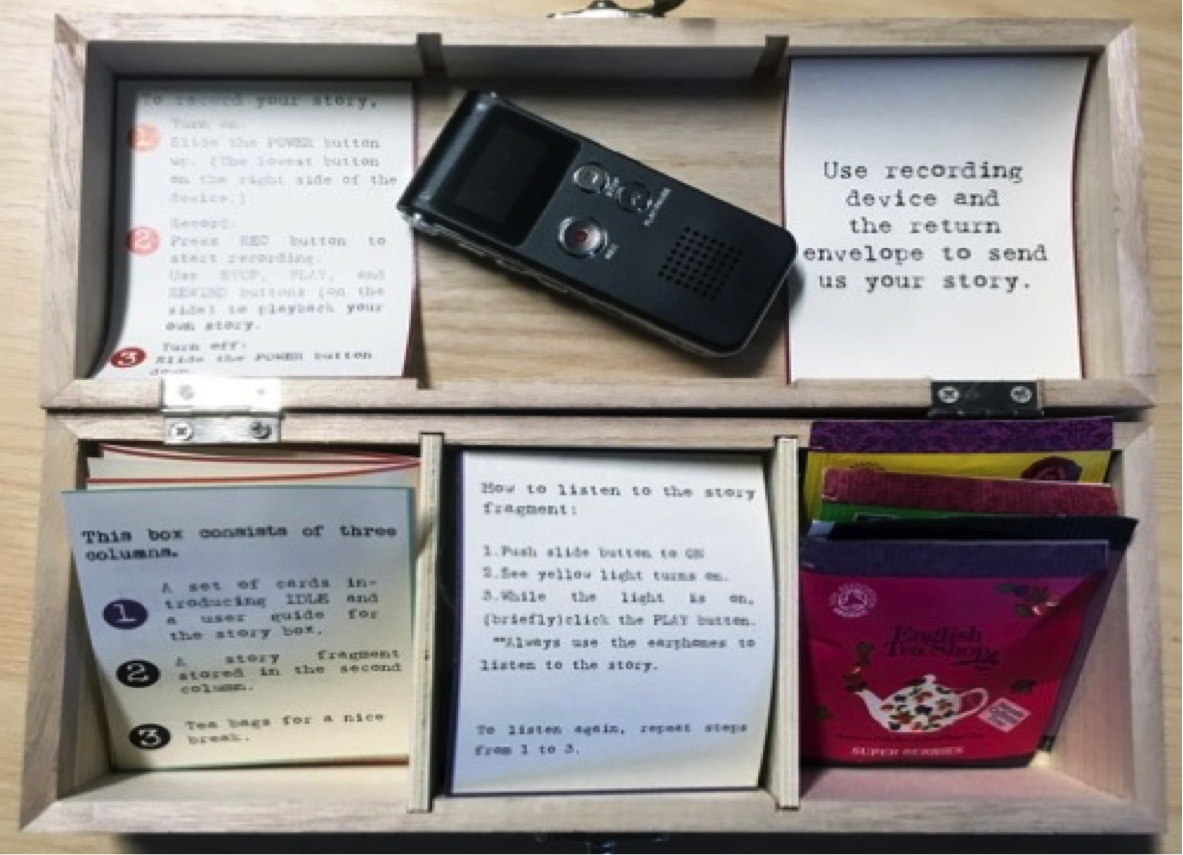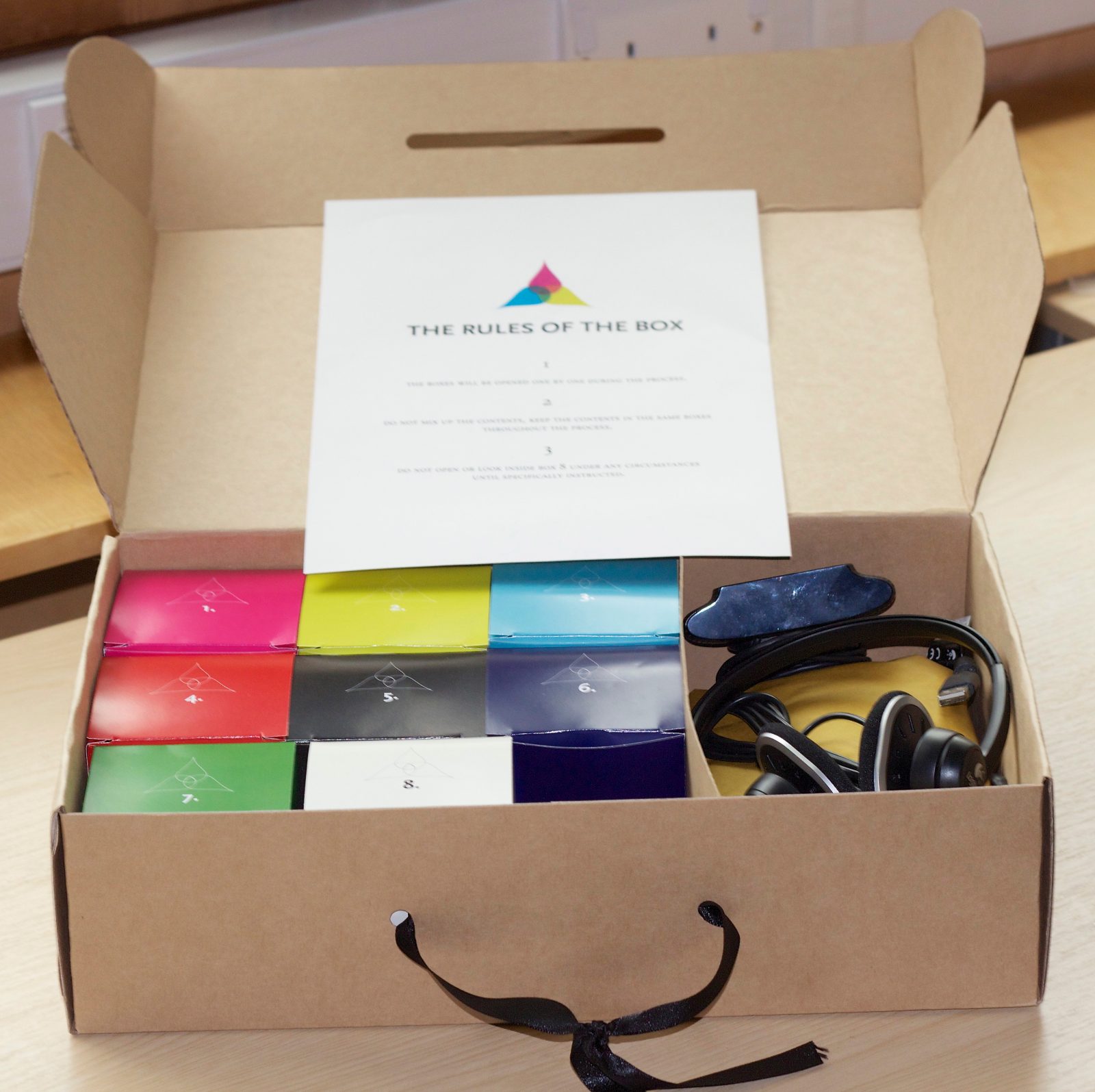-
Movement-based Co-creation of Adaptive Architecture
Despite movement capture technologies becoming commonplace, the design and the consequences for architecture of movement-based interactions require further research. We combined previous research in this space with the development and evaluation of the MOVE research platform that allows the investigation of movement-based interactions in Adaptive Architecture. Using a Kinect motion sensor, MOVE tracks selected body […]
-
Conversation for Three
Conversation for Three is an adaptive dining experience that detects diner’s emotional changes during a conversation and projects different films, animations, conversational suggestions, film quotes and sounds depending on the emotions being detected. It had its premiere at Nottingham Broadway Cinema in July 2018. In collaboration with artist Jo Fairfax and working with Will Preston, Jonathan Hale […]
-
Living with Adaptive Architecture
The large-scale introduction of computing technologies into buildings has made architecture adaptive to its environment and its inhabitants. Systems of sensors, actuators and software have changed the way we live in such buildings, how we interact with architecture and with each other. In spring 2018, the Living with Adaptive Architecture exhibition brought together projects and […]
-
Take A Seat
This competition entry has two aims: 1) To inform pharmacy users about drug resistant bacteria (DRB) by offering a range of interpretive and interactive media – including interaction with pharmacy staff, and 2) To encourage self-care (and care for others) by providing quality spaces, including outdoor seating and a multimedia ‘living room’ waiting area, which […]
-
The Institute of Digital Life and Ephemera – IDLE
IDLE was created in 2016 to address the increasing ephemerality of digital culture. Digital technologies allow us to create and share content across the globe more easily than ever before, but that culture is at risk of being lost for future generations. Follow us in our important archiving work, looking to rebuild the global storytelling […]
-
Springer Series in Adaptive Environments
The Springer Series in Adaptive Environments presents cutting-edge research around spatial constructs and systems that are specifically designed to be adaptive to their surroundings and to their inhabitants. The creation and understanding of such adaptive Environments spans the expertise of multiple disciplines, from architecture to design, from materials to urban research, from wearable technologies to […]
-
Invisible
Two mirrors, on either side of the Atlantic, are being designed to reflect the environment where they are located, with an invitation to play, perform and explore our sense of place and where we feel we are from. Stories of the past, the present and the future celebrate experiences and knowledge of our communities. The mirror […]
-
Breathing Space
The experimental work with ExoBuilding inspired the development of Breathing Space, a proto-product of a breathing room. Breathing Space was designed and engineered in close collaboration with a care home, a yoga practitioner and a mindfulness practitioner. It reflects the need to be open and accessible, to fit into many different spaces, to be transportable […]
-
Data Journeys Archway
The Data Journeys Archway was a first experiment as part of the development of a larger archways project, an outcome of and follow-on from Andrew Wilson’s shared research residency with Mixed Reality Lab and Sustrans, the national active travel charity, and funded by Horizon. The original inspiration for the archways project came from a member […]
-
Digitopia Interactive
The Digitopia Interactive playfully combines graphics and musical composition. It accompanied the Digitopia dance performance for children by Tom Dale Dance on its UK tour. The stage show by Tom Dale Dance presents two characters embedded in a fantastical world of graphics and sound, taking audiences along on a ride of exploration. The two characters […]
-
Adaptive Architecture Conceptual Framework
Adaptive Architecture is concerned with buildings that are designed to adapt to their environment and to their inhabitants whether this is automatically or through human intervention. This is a multi-disciplinary research interest spanning Architecture, Computing, Engineering, Design, Psychology and the Social Sciences. The Adaptive Architecture framework captures the developing field and allows the crowd-sourcing of changes, […]
-
Screens in the Wild
This project brought together University College London, the University of Nottingham (Mixed Reality Lab, Computer Science), the London Borough of Waltham Forest, the Commission for Architecture and the Built Environment (CABE) and Leytonstone Business Improvement District (e11bid) to investigate how the urban experience mediated through connected large screens can be designed to augment real world […]
-
MOVE
MOVE is an architectural prototype and research platform to explore the relationship of body movements and movements in adaptive architecture. Using a Kinect motion sensor, MOVE tracks the gross body movements of a person and allows the flexible mapping of those to the movement of building components. In this way, a person inside MOVE can […]
-
Creativity Bento Box
Creativity Bento Box For the Creativity Greenhouse project (EPSRC funded EP/J006688/1), we created a physical resource box, the Creativity Greenhouse Bento Box, to support people in remote collaboration. This was triggered by participant feedback gathered throughout the iterative development of the Creativity Greenhouse, in which people come together virtually to first collaborate to generate ideas […]
-
Creativity Greenhouse
The Creativity Greenhouse project funded by EPSRC investigated whether facilitated creativity activities (e.g. funding sandpits, bridging the gaps events, group brainstorms) can be conducted with participants remote to each other, supported by digital communication technologies. Use of such technologies could enable the capability to work without geographical and/or time constraints and could enhance the pool […]
-
ExoBuilding
ExoBuilding A novel type of Adaptive Architecture drawing on personal data directly derived from people’s physiology. ExoBuilding explores the novel design space that emerges when an individual’s physiological data and the fabric of building architecture are linked. In its current form ExoBuilding is a tent-like structure that externalises a person’s physiological data in an immersive and […]
-
Anywhere Somewhere Anywhere
Anywhere Somewhere Anywhere Discover the Nottingham you didn’t know on a guided tour where you are the guide. Unlock unknown spaces and overhear stories these spaces tell. Anywhere Somewhere Everywhere was an interactive conversation with new technology from fingerprint to footprint – between the visitor and the visited, past and present, private and public. It […]
-
Mixed Reality Architecture
Mixed Reality Architecture Mixed Reality Architecture embeds an always-on communication infrastructure across a shared virtual environment into everyday office environments. Each connected office is represented as an office avatar in the shared world. By moving virtual offices in relation to each other, office inhabitants control who they see and who they hear. When two or […]
-
Future Garden
Future Garden Future Garden let individuals explore Sneinton Market in Nottingham to discover the effects of city planning, alternative futures, lost histories and individual dreams. A handheld computer presented participants with a structured self-guided tour. At nine different physical locations, the screen showed images of the existing market overlaid with new architectural designs. These drawings, […]
-
Augurscope Two
[vc_row][vc_column][vc_column_text] Augurscope 2 The Augurscope 2 is a portable mixed reality interface for outdoors, consisting of a base unit and a detachable top. Users can move, rotate and tilt the display in order to view a virtual environment as it would appear from that particular vantage point. The Augurscope 2 has a base unit and […]
-
Moving City
Moving City was the latest in a series emerging from a research project set up in 2000 at the University of Nottingham. Originally entitled “Architecture Exposed: New Ideas for Exhibiting the Built Environment” the project set out to challenge the conventional methods of presenting exhibitions about architecture through photographs and drawings shown inside a gallery. […]
-
Augurscope
[vc_row][vc_column][vc_column_text] Augurscope The Augurscope is a shared Mixed Reality Interface for outdoors. It tracks its position, orientation and tilt to provide a view into a shared, collaborative virtual environment. It can be repositioned to view a virtual 3D space that is overlaid on the physical space it is located in. The Augurscope can be shared […]





















